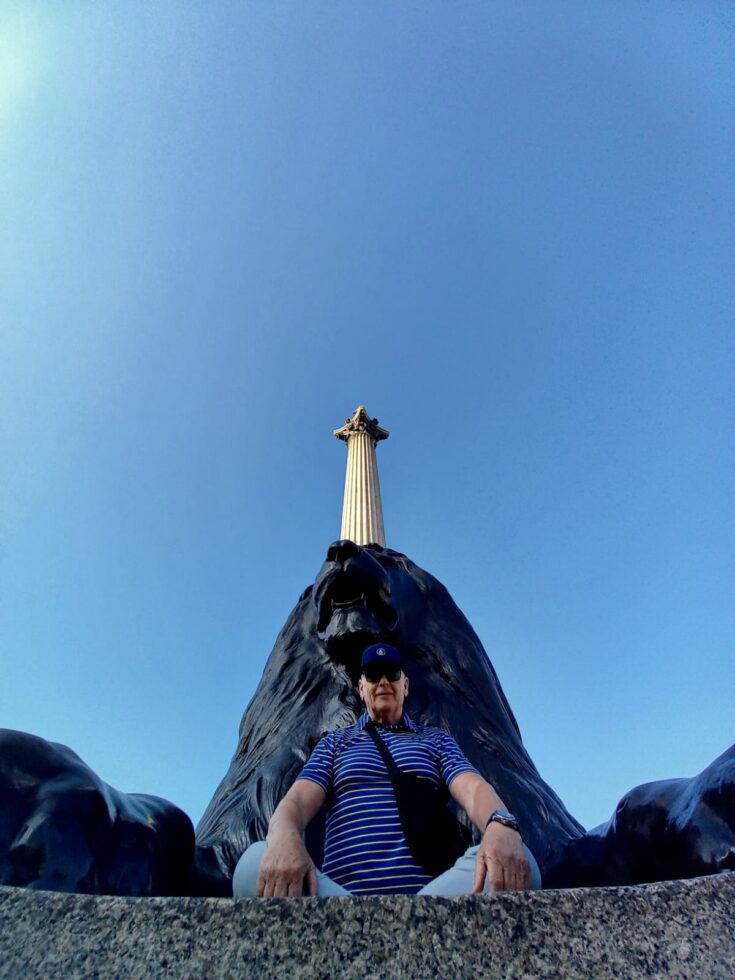Where Nelson keeps watch, lions have cat feet, and lamp posts moonlight as police stations
Hello again lovelies!
Coffee and croissant later, we’re out the gate and running again!
Or at least at a leisurely “holiday pace.” Today our route begins in Trafalgar Square, the city’s grand open-air living room.
Lions & Lamp Posts
Rising 52 metres into a clear cerulean sky, Nelson’s Column dominates Trafalgar Square, a proud tribute to Admiral Horatio Nelson — considered by many the greatest of Britain’s naval heroes. His most famous victory came at the Battle of Trafalgar in 1805, when the Royal Navy defeated a combined force of 33 French and Spanish ships, destroying about 20 without losing a single vessel. Nelson himself was killed in that battle, but here in London, he watches over the city forever.
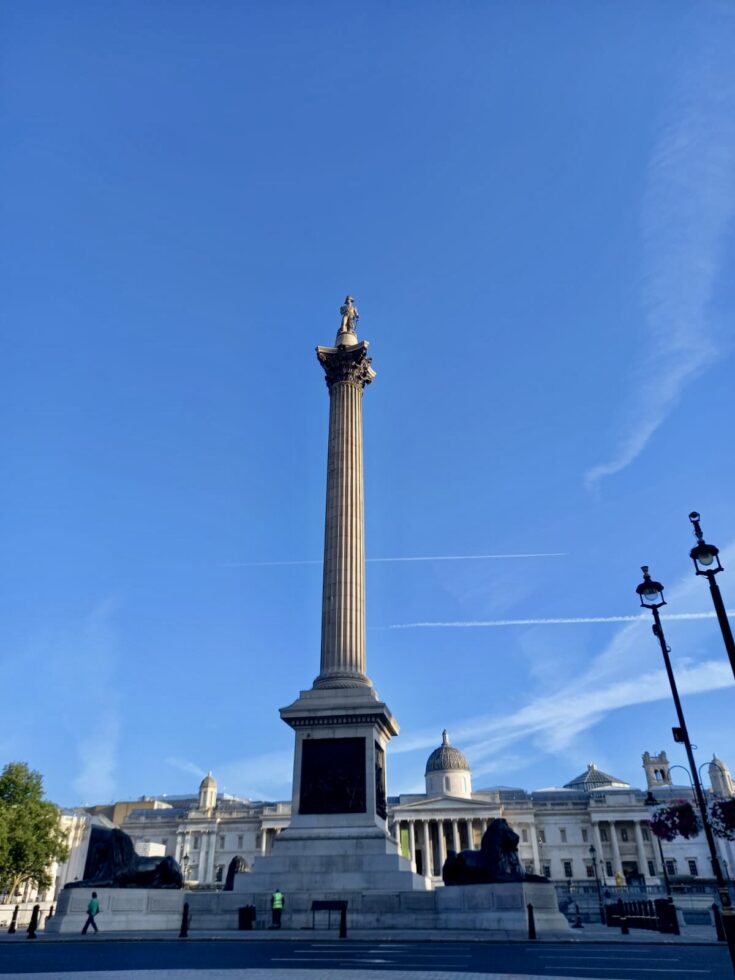
Fun Facts about Trafalgar Square:
#1: If you walk down The Mall, you’ll spot lamp posts topped with tiny galleon-like ships — nicknamed Nelson’s Fleet. They’re said to represent the ships from Trafalgar, though no one can quite agree if each one matches a real vessel.
#2: The four enormous lions guarding Nelson’s Column were sculpted by Sir Edwin Landseer — but their paws are suspiciously…cat-like. That’s because the dead lion Landseer used as a model (from London Zoo) had started to decompose by the time he got to the paws, so instead he borrowed the shape from his pet cats.
#3: Cannons from the destroyed French fleet were used across London as road Bollards, though few remain today, hows that for sticking the finger to them?
#4: There’s an unassuming lamp post hiding something unexpected — a one-person police station, built in 1928 so officers could discreetly watch over protests in Parliament Square. London loves a good secret, though it’s now a handy broom cupboard!
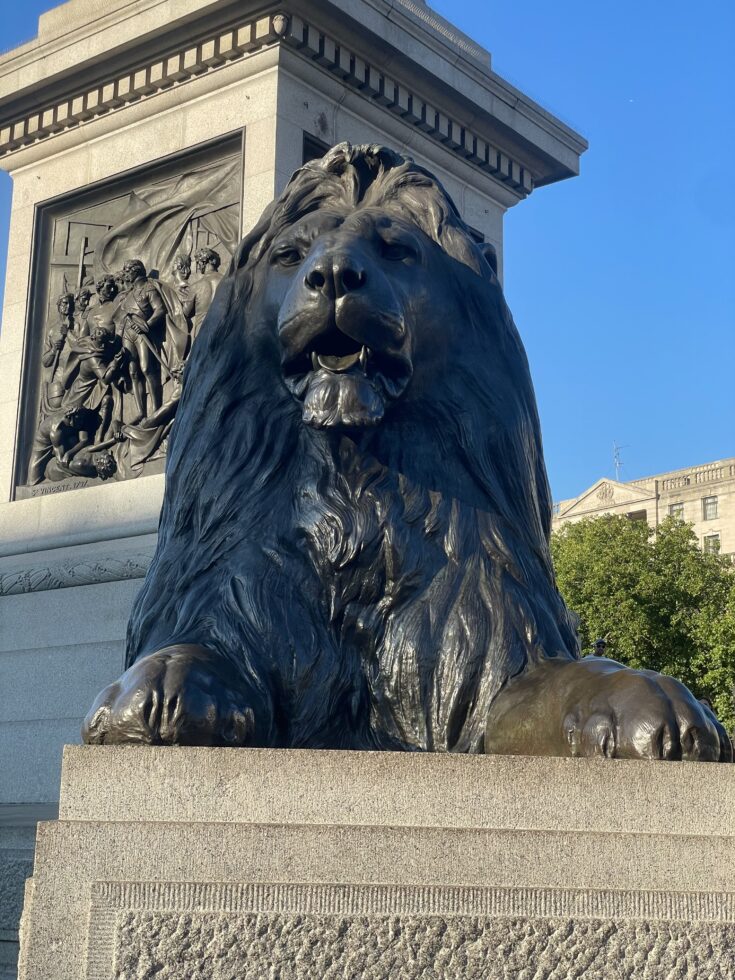
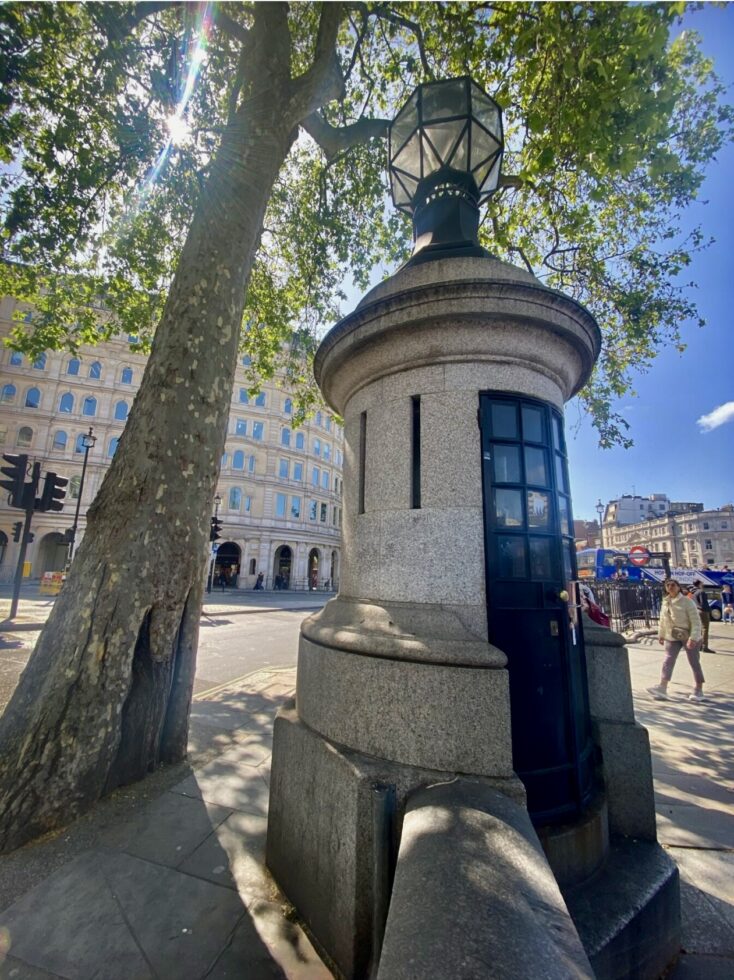
We linger in the square, imagining it lit for its annual Christmas ceremony, when Oslo gifts London a towering spruce as a thank-you for Britain’s support during WWII — a tradition since 1947.
Palaces and Pelicans
The obligatory snap in front of Buckingham Palace, where G tries not to look like a kiddy snatcher, a turn around Queen Victoria’s sparkling Statue then through the magnificent golden gates we wander into St James’s Park, pausing for a peek at the pink pelicans preening at waters edge.
(Fun fact! – Pelicans have actually lived here since 1664, when the Russian Ambassador gifted the first pair to the monarch — today’s flock includes Isla, Tiffany, Gargi, Sun, Moon and Star, who behave like absolute feathered royalty.)
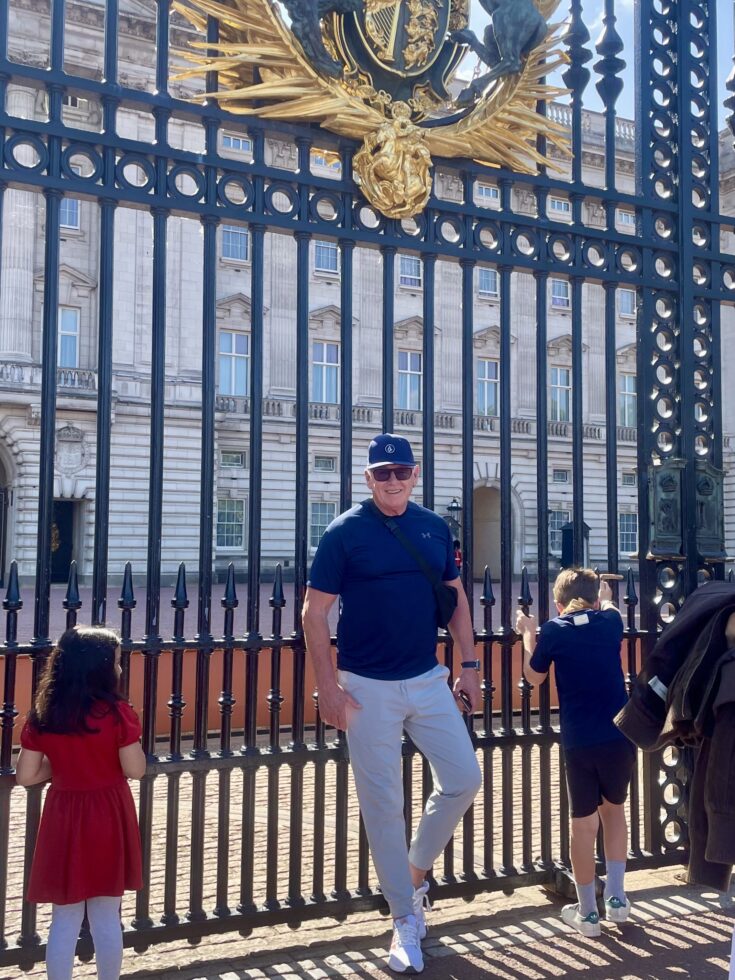
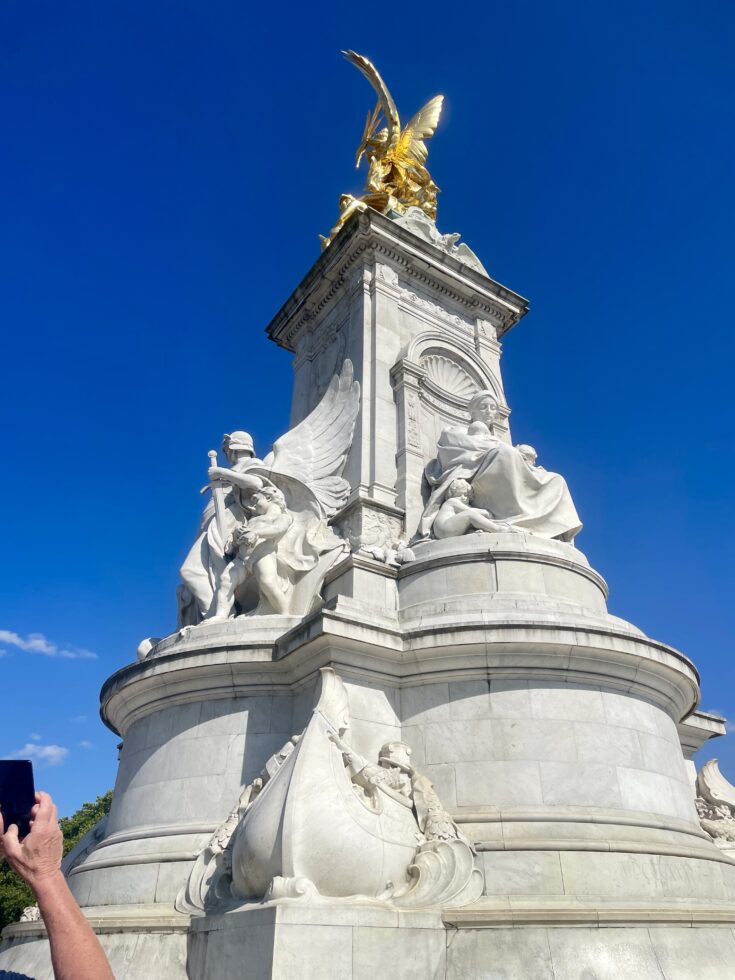
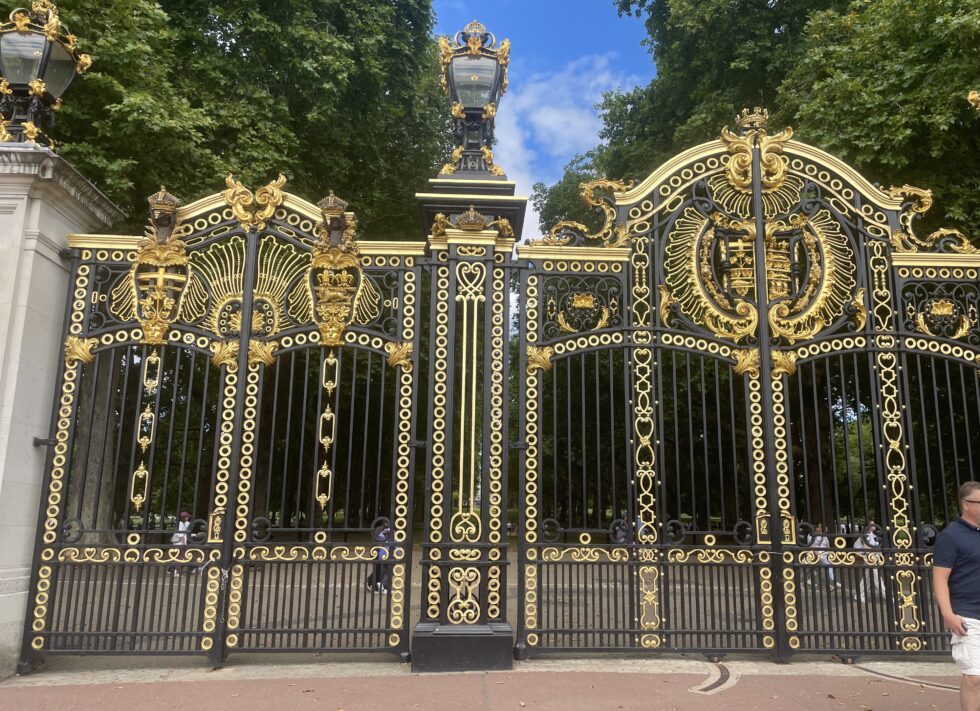
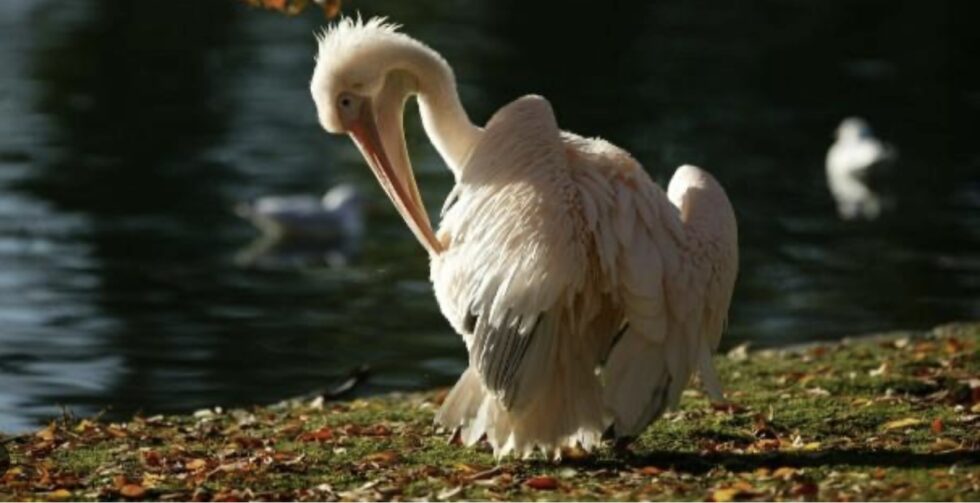
Birdcages and Horse Guards
Onto Birdcage Walk to Horse Guards Road, we detour to greet the Royal Horse Guards in all their gleaming finery.
Fun Facts – the Birdcage Walk
#1: Originally an enormous cage, Birdcage Walk gets its name from King James I’st royal aviary and menagerie, which once stood alongside St James’s Park. It wasn’t just filled with birds like hawks and falcons — the collection reportedly included camels, crocodiles, and even an elephant.
#2: For over 200 years it was a private royal road – until 1828, only the royal family and the Duke of St. Albans (the Hereditary Grand Falconer) were allowed to drive along Birdcage Walk. Everyone else had to go the long way around!
#3: Part of D-Day was planned at One Birdcage Walk — a building still standing on the street — it was also used for secret planning sessions ahead of the D-Day landings in World War II.
#4: The jet engine was presented here too – soon after the war, Sir Frank Whittle introduced his groundbreaking plans for the jet engine in the Lecture Theatre at One Birdcage Walk.
#5: You’ve probably seen it without realising – Birdcage Walk is part of the route of the London Marathon, and even includes a hidden alley called Cockpit Steps, which appears in the diaries of both Samuel Pepys and John Evelyn.
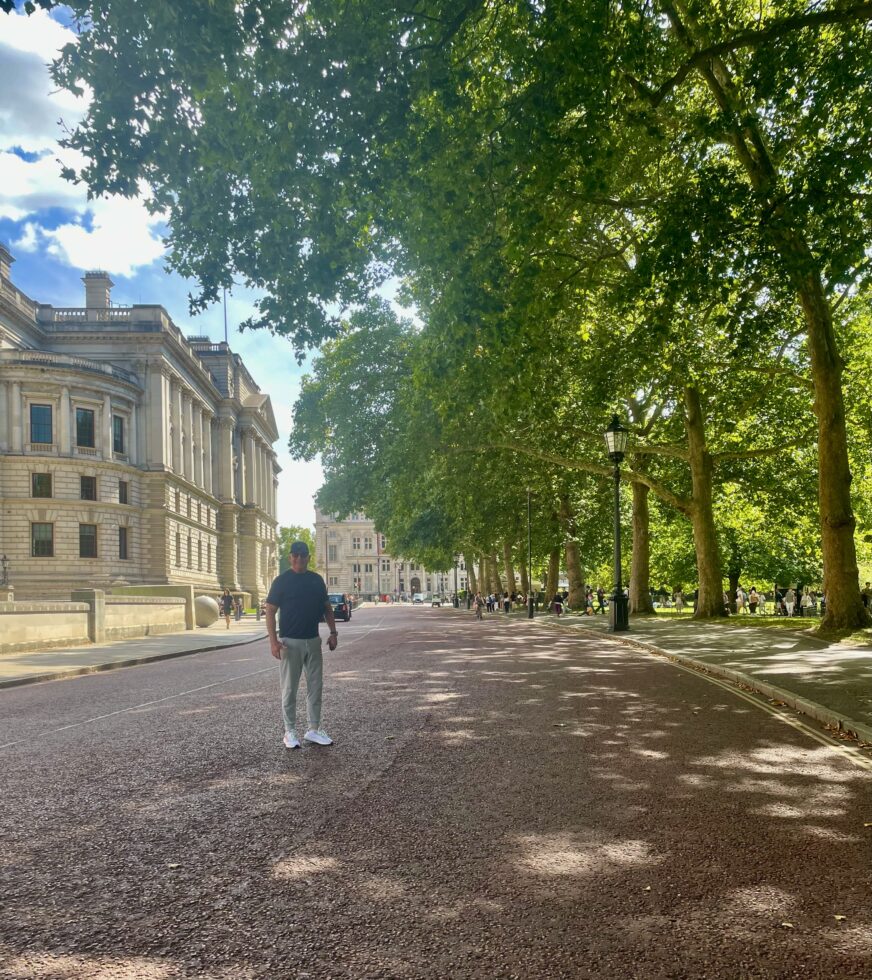
Fun Facts – the Horse Guards
#1. A royal execution is literally marked on the clock – there’s a little black mark on the clock overlooking Horse Guards Parade marking 2:00 pm, the exact moment King Charles I was executed in 1649. Rather a dramatic reminder don’t you think?
#2. You can personally meet the King’s Life Guard (and their horses!) – between 10 am and 4 pm daily, they mount up in full ceremonial gear — gleaming helmets, breastplates, immaculately brushed horses — and perform a timeless ritual right in the middle of modern London. The horses don’t mind their photo being taken and also don’t mind taking a nip if you get too close. It’s must have been 50 degrees inside the guards outfits today!
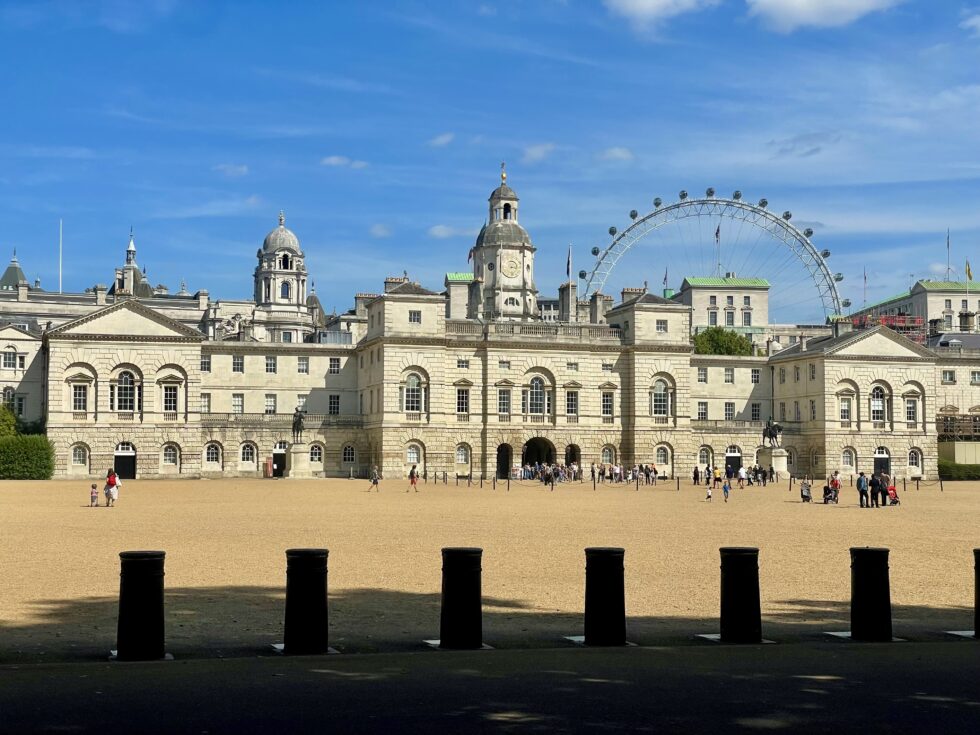
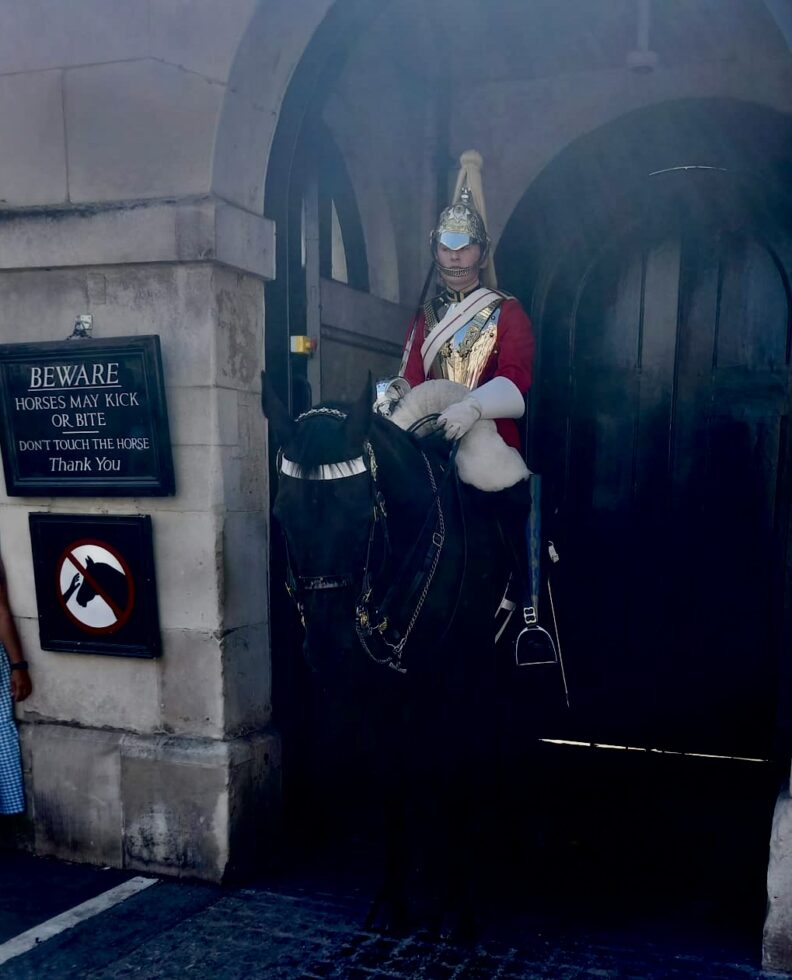
Finally, an amble along Whitehall, sneaking a peek through the gates of No. 10 Downing Street before heading to a respectable ale house for a well-deserved G&T and a toss up between Sunday roast with Yorkshire pudding or a light summer salad. The yorky pudding won. A lazy day by London standards — but for us, a perfect blend of ceremony, gardens, and a gentle loop through history.
